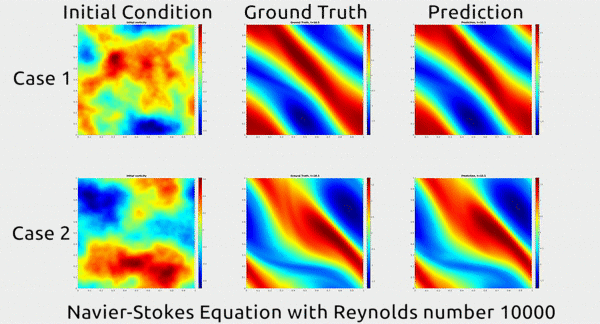 |
It's a lot more than just driving directions. GPS, managed by the US Space Force, is embedded throughout the high-tech world we live in. |
On Nov. 5, a SpaceX rocket roared into the heavens from Cape Canaveral, Florida, carrying a boxy, 5,000-pound, antenna-studded satellite toward its destination 12,500 miles away, up in what's known as medium Earth orbit. From that distant vantage point, it'll soon beam signals that will help you find your way to a friend's new house out in the suburbs or a vacation destination six hours down the coast.
If you stop at an ATM along the way to grab some cash, those signals will also help the bank know your withdrawal happened after your direct deposit paycheck refreshed your finances. They'll be a factor, too, in whether your cellphone call to your friend, or the rental agent, goes through without garbling or fading.
Those signals will be coming from a GPS III satellite, the newest member of a constellation of satellites that have become a constant and intimate presence in our daily lives. With GPS III, we're getting not just new boxes in the sky, but a series of upgrades that'll help make the system better for all of us here on Earth. And we'll need it.
The Global Positioning System has become vital to nearly all sectors of the country's critical infrastructure, with much of its work happening behind the scenes, and likely to a much greater extent than you realize. GPS tells us where we are and helps us get where we're going, but a core aspect of the technology is when -- the timing of, well, more or less a zillion things. It plays a critical role in financial transactions and stock trades, forecasting the weather, monitoring earthquakes and keeping the power grid humming.
"It's so much more than just driving directions," says Tonya Ladwig, acting vice president of space navigation systems at Lockheed Martin, which built that satellite.
According to a study last year commissioned by the National Institute of Standards and Technology, GPS has about $1 billion a day in economic impact in the US. Its reach is, simply, mind-blowing.
"Gauging the overall value of GPS is nearly impossible," writes Greg Milner in Pinpoint, a 2016 book about how the space-based system came to be and the effect it's having on the world. "It has become difficult to untangle the worth of GPS from the worth of everything."
That's a lot to put on the shoulders of not much more than a couple dozen satellites and what turns out to be a wisp of signal by the time it reaches your phone or an airplane coming in for a safe landing. Which is why experts and lawmakers have long fretted over GPS' susceptibility to jamming and spoofing and the possibility that this invaluable resource could become a single point of massive failure.
See also: Space has become a junkyard, and it's getting worse
GPS is the premier service among just a handful of global navigation satellite systems, or GNSS, which include the European Union's Galileo, Russia's Glonass and China's BeiDou. It's in the midst of a long-running modernization intended to deliver better signals to folks on the ground and to make the satellites more robust in space. That's good news not just for Uber drivers, pilots, bankers, geologists, farmers doing precision agriculture, and users of drones and self-driving cars but also for the sector that got the whole GPS ball rolling in the first place: the US military.
And the military isn't just a heavy-duty GPS user. It also runs the service, for all of us around the world.
How GPS works
What makes GPS an always-on resource -- every bit as much a reliable utility as the electricity and water in your house -- is the coverage the satellites provide.
There are 31 satellites in the GPS constellation, and 24 are considered the minimum for the core constellation to work as it's supposed to. Those two dozen are spread out in six orbital planes, so you should always be within view of at least four at any given moment. The remaining seven are essentially spares, to be rotated in as necessary. Though they're continuously beaming signals down to Earth that you'll pick up in your phone, fitness tracker or boating sat-nav device, they don't know where you are. They just broadcast, like a radio station in space.

A GPS III satellite stands tall at Lockheed Martin's Littleton, Colorado, facility, in May 2018, a year and a half before its launch into orbit. The striped elements on top are antennas, which will be pointed earthward when the satellite is on orbit.
Lockheed Martin"The GPS satellites are actually just highly precise atomic clocks, hooked to a radio transmitting a time signal," says Dana Goward, president of the Resilient Navigation and Timing Foundation, a Washington, DC-based nonprofit.
On the ground, your GPS receiver -- which is what your mobile phone is, thanks to a GPS chip -- picks up the signals from four or more satellites. By measuring slight differences in the signals' time of arrival, all the way down to nanoseconds, it can calculate where you are and whether you're in motion.
"[Location] is a byproduct of how the system works," says Scott Burgett, director of GNSS and software engineering at Garmin, which makes devices including fitness trackers and smartwatches. "All the satellites transmit signals, and they're synchronized pretty accurately, but in order to actually get your position information, you have to solve for time."
The timing data gets translated into highly precise three-dimensional location information -- latitude, longitude and altitude -- as well as speed and direction. That's where Google Maps, Apple Maps and other geographic information systems come into play. It's how we get to the part where you have a street address and you say, "I'll put that in my GPS," and Waze lets you know to take Exit 27, go 3.5 miles and turn left into the parking lot of the beer and burger joint you've heard good things about.
Or it just gets used as a time stamp, pure and simple. Think financial transactions, for instance.
"The timing aspect of this is probably more widely used than the where-are-you aspect," says Goward.
Space Force reporting for duty
The US Space Force operates and maintains the GPS constellation. Each satellite -- picture a PODS storage container, metallic rather than white, with solar arrays sticking out like a pair of wings -- makes two transits around the planet every day.
Even as precisely programmed as those orbits are, the satellites still need their flight paths tended to around the clock.
"Those GPS vehicles are only as accurate as the data we provide them," says 1st Lt. Andrew Johnson, a crew commander in the 2nd Space Operations Squadron, or 2 SOPS. "We get where the satellite thinks it is, we know where the satellite is, and we'll basically bake that into a nice little message, we'll send it up to the vehicle, and the vehicle goes, 'OK I'm actually here,' and that change in information finetunes the signal."

Two members of the 2nd Space Operations Squadron designate the first GPS III satellite as healthy and active for users on Jan. 13, 2020. To make room for it, 2 SOPS pushed a GPS IIA satellite to a higher, less congested, "disposal orbit." Designed for 7.5 years of service, the older satellite had been operational for 26 years.
US Air Force photo by Staff Sgt. Matthew Coleman-FosterJohnson and 2 SOPS (pronounced "two sops") keep tabs on the GPS satellites from Schriever Air Force Base, located just east of Colorado Springs, Colorado. There are also 16 tracking stations scattered around the globe.
It's no accident that the US Space Force, spun off a year ago from the Air Force Space Command and carrying on its GPS mission, is wrangling a service that's vital to devices used by millions of civilians and businesses worldwide. The origins of GPS stretch back to secret work by the Department of Defense in the 1970s, in a quest for precision targeting. As Milner recounts it, GPS chief architect Brad Parkinson summed up that goal in the phrase "Drop five bombs in the same hole."
See also: How SpaceX Starlink broadband will envelop Earth and transform the sky
In 1983, after a Korean Air Lines passenger jet strayed into Soviet airspace and got shot down, killing 269 people, President Ronald Reagan declassified GPS to give civilian aircraft access to the navigation signals. Almost a decade later, GPS famously earned its stripes as a military resource during Operation Desert Storm, when it helped guide US and allied forces across desert expanses to a swift victory over Iraq during the Gulf War.
Space Force still has military users top of mind as it carries out its GPS mission.
"For us, it's to deliver sustained, reliable GPS capabilities to America's warfighters," says Maj. Gen. DeAnna Burt, director of operations and communications at Space Force headquarters in Peterson Air Force Base, Colorado. Space Force also works closely with civilian and commercial partners to keep things running smoothly, she tells me. "We're always looking to improve not only our military capabilities but our civilian capabilities as well."
Though the funding to keep things running goes through the Pentagon -- the Space Force GPS program had a 2020 fiscal year budget of $1.71 billion -- there's civilian oversight as well. The Defense Department and the Transportation Department co-chair the US government's National Executive Committee for Space-Based Positioning, Navigation and Timing, which coordinates GPS-related matters across federal agencies and includes representatives from Boeing, Garmin, Google, Ohio State and Stanford.
Note the keywords in that committee name: positioning, navigation and timing, or PNT. Where you are, where you're going, and when the signals hit a receiver. It's a term that's inescapable when you're talking with folks who live and breathe GPS.
What GPS III brings
Like any technology of a certain vintage -- the Air Force Space Command declared full operational capability for GPS in April 1995 -- the system needs to be regularly updated, and what that means right now is GPS III.
Here's what GPS III promises: The signals will be three times stronger, and they'll have eight times the anti-jamming capability. The satellites are projected to have a 15-year lifespan, double that of those from the early part of the previous generation, though the older ones have tended to stay in business longer than expected. A modular design means it's easier to make timely changes on the assembly line or to send software uploads to the satellites on orbit.
There's also a new civilian frequency, called L1C. Besides helping with signal strength, it's compatible with Galileo, the EU's counterpart to GPS.
In November 2018, the FCC authorized Galileo signals to be received in the US, which made it that much more likely you'll have multiple satellites in view -- in the double figures even, when technically you only need four to get a good, accurate location. The addition of the L1C signal with GPS III will likely make matters even better.
"If you have more satellites," says Garmin's Burgett, "you can have more direct line-of-sight signals available to you and you can get a better fix."
The military, meanwhile, is getting, among other things, the encrypted M Code that's key to the enhanced anti-jamming and anti-spoofing capabilities, as well as spot beam capability for focused signals in combat areas.
A little bit down the road, the addition of a laser retro-reflector array will allow the positioning of satellites to be refined via ground-based laser.

GPS III satellites at various stages of production in Lockheed Martin's Littleton, Colorado, facility.
Lockheed MartinThe first of the GPS III generation of satellites, all built by Lockheed Martin at its Littleton, Colorado, facility, lifted off in December 2018 and became operational in January of this year. The one that lifted off Nov. 5 is the fourth in the series, and it should be ready for duty before we get too deep into 2021.
Lockheed Martin has a contract to deliver a total of 10 GPS III satellites, at a reported average cost of $529 million apiece, but the company says the last two of them will come in at around $200 million each. When that's done, it'll move ahead with a batch called GPS III F, an additional 22 satellites to continue replacing older models, through the coming decade.
"It takes a long time to replenish the GPS constellation," Burgett says. "It takes years."
Weak spots
It might seem like GPS is pretty much always there when you need it, but it's more vulnerable than you may realize. If you live in a city with tall buildings, you've probably fumed waiting for an Uber driver to get to where you're standing -- it could be that buildings are blocking the satellite signals in what's known as the urban canyon effect.
That's a line-of-sight issue, and it can often be resolved by moving, if you can, to a spot with a better view of the heavens. The US government says that GPS-enabled smartphones are typically accurate to within a 16-foot (5-meter) radius under the open sky.

A Lockheed Martin engineer works on a GPS IIR-M satellite in 2005. According to GPS.gov, seven of this generation of satellites are still operational.
Lockheed MartinThen there's interference -- other, stronger signals making too much radio "noise" nearby.
"Because it's such a weak signal, it's very, very easy to block, to jam," Goward says. "Virtually any noise within that frequency is going to keep you from hearing the GPS signal."
Space Force's Burt likens it to a nearby sound system at full blast: "If you were at the dinner table and there was a 500-watt stereo playing at full volume in the kitchen, would you be able to hear the conversation going on around you? You might pick up pieces, parts of it, but not pick up all of it."
The US military has to worry about hostile forces jamming or spoofing GPS signals to hide troop movements or to keep friendly forces from getting where they're supposed to go, or weapons from hitting their targets.
Outside of war zones, some countries use GPS interference to mask the whereabouts of VIPs, while criminals use it to pull off shipping heists. The nonprofit Skytruth, which uses satellite images and data to track polluters and poachers, last year reported on GPS manipulation at oil terminals in China likely intended to hide activities that run afoul of export controls.
The Pentagon and other government agencies, meanwhile, are aghast at the Federal Communications Commission's approval last April of a controversial plan by a company called Ligado to create a nationwide 5G network. The frequencies Ligado would be using are very close to those employed for GPS. Ligado says it's sorted out any interference issues, but Defense Department CIO Dana Deasy said in a Senate hearing in May that "there are too many unknowns and the risks are too great."
The vulnerabilities of the satellite signals are something the GPS community has been thinking about for a long time, along with the need for some sort of backup -- the idea being to provide a ground-based service that might not be as good but that would suffice when somebody's jamming or spoofing or if the satellites aren't available.
There have been a number of false starts down that road over the years. A new push came at the end of 2018 with the National Timing Resilience and Security Act, which directed the Secretary of Transportation to establish a terrestrial timing system that could serve as a backup for GPS within two years. We're at that mark now, with nothing yet to show for it.
A more limited proposal came in February when President Trump signed an executive order on PNT, which at least got the NIST in October to draft guidance on developing a timing system free of GPS.
In the years ahead, there will be more Space Force rocket launches carrying the latest GPS III satellites from Lockheed Martin. Modernization of the constellation will continue apace, new applications will appear, and as much as we're hooked on GPS services now, we're likely to only get more dependent.
Satellite timing is everywhere on Earth and in everything.
"I think most people don't realize how much they depend on GPS day in and day out," Space Force's Burt says. "It would be a bad day if we didn't have GPS."















